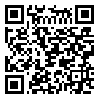Volume 68, Issue 4 (6 2010)
Tehran Univ Med J 2010, 68(4): 250-256 |
Back to browse issues page
Download citation:
BibTeX | RIS | EndNote | Medlars | ProCite | Reference Manager | RefWorks
Send citation to:



BibTeX | RIS | EndNote | Medlars | ProCite | Reference Manager | RefWorks
Send citation to:
F M, N R, M M R, H H, F S, Z M et al . Identification of Leishmania species isolated from human cutaneous Leishmaniasis in Gonbad-e-Qabus city using a PCR method during 2006-2007. Tehran Univ Med J 2010; 68 (4) :250-256
URL: http://tumj.tums.ac.ir/article-1-355-en.html
URL: http://tumj.tums.ac.ir/article-1-355-en.html
1- , n.rahbarian@cmbrc.org
Abstract: (10195 Views)
Background: Cutaneous Leishmaniasis is endemic in plenty of Iranian provinces. This study aimed to determine the epidemiological status of the cutaneous Leishmaniasis outbreak, isolation and identification of the parasite using a PCR method in burden rural areas of Gonbad-e-Qabus County, north Iran.
Methods: Data was collected on the prevalence of scars and ulcers over a period of three months among 6990 inhabitants of five villages around Gonbad-e-Qabus county,north Iran, during 2006-2007. Cultured promastigotes were identified using PCR technique. ITS1 and ITS2 of Non Coding Transcribed region at ribosomal DNA of 46 Leishmania isolates were amplified and the PCR products were separated by electrophoresis in 1.5% agarose gel (200 mA, 140 V), visualized by staining with ethidium bromide, and photographed. To confirm the PCR findings, six Leishmanis isolates were injected individually into two BALB/c mice.
Results: Among 6990 inhabitants of the five villages, 62.9% had scars and 0.5% had active lesions. The most highly infected age group was 0-10 years and nobody was infected in individuals more than fifty years of age. Individuals 11 to 20 years of age were the most highly infected age group. The results showed that from 46 isolates, all (100%) were L. major in comparison to reference strains and all of them could produce ulcer at the base tail of BALB/c mice, 4-12 weeks after inoculation.Conclusions: According to this study, cutaneous Leishmaniasis due to Leishmania major is endemic in Gonbad-e-Qabus county, north Iran. The results were confirmed by active lesions induced in BALB/c mice.
Send email to the article author
| Rights and permissions | |
 |
This work is licensed under a Creative Commons Attribution-NonCommercial 4.0 International License. |





